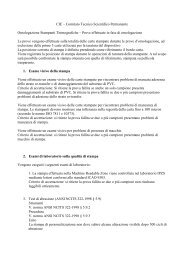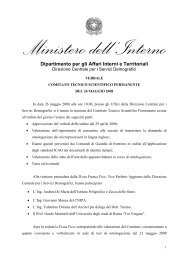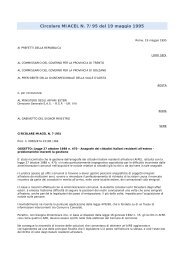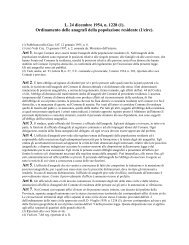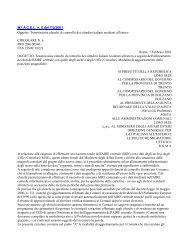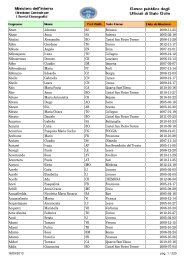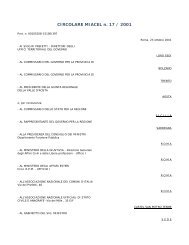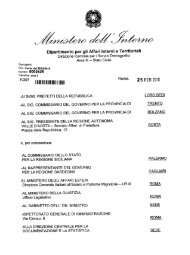C.I.E – Carta di Identità Elettronica Functional Specification Version 2.0
CIE - Functional Specification v 2.0
CIE - Functional Specification v 2.0
- No tags were found...
Create successful ePaper yourself
Turn your PDF publications into a flip-book with our unique Google optimized e-Paper software.
• The length in bits of the private exponent d is the same of the modulus.The plain text M may be a 1024 bits integer smaller than the modulus (usually the most significantbyte is zero).13.2 Symmetric algorithmsDifferently from RSA (and other asymmetric algoritms) where <strong>di</strong>fferent keys (public and private)are used for <strong>di</strong>rect and inverse transformation, symmetric algorithms are characterized by the use ofthe same key for both operations.Symbol DescriptionKK 1K 2K 3D KD -1 KDES KeyThe first DES key for 3DES computationThe second DES key for 3DES computationThe third DES key for 3DES computationDES with key KInverse DES with key K3D K1K2 3DES with keys K 1 and K 2ENCDECMCEncipheringDeciperingPlain dataCiphered dataTable 62: Symbols legend for asymmetric cryptography13.2.1 DES (Data Encryption Standard)The Data Encryption Standard (DES) was developed by an IBM team around 1974 and adopted as anational standard in 1977 in fact is one of the FIPS approved algorithms for encryption. DES wasthe first official U.S. government cipher intended for commercial use and it’s the most widely usedcryptosystem in the world.The DES algorithm is specified in FIPS 46-3.In the CIE the DES is used only as Triple DESCIE - <strong>Functional</strong> <strong>Specification</strong> v <strong>2.0</strong> -Page 73/76






